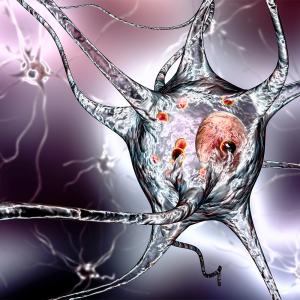This article is part of New Fresco Institute Expands Operations of Parkinson’s Division, Neurology & Neurosurgery Year in Review, Neurology & Neurosurgery 2015 Year in Review.
NYU Langone’s Center for Neuromodulation, a collaboration between our neurosurgery and neurology departments, is a regional leader in another important treatment approach for Parkinson’s, involving the surgical implantation of deep brain stimulation (DBS) devices. Each device contains a set of tiny electrodes that are placed in the subthalamic nucleus (STN) or globus pallidus internus (GPi) and then stimulated via an implanted pacemaker according to settings tailored to the patient.
“This technique can significantly alleviate motor symptoms in Parkinson’s patients who are not adequately treated by medication, or are experiencing problematic medication side effects,” notes Alon Mogilner, MD, PhD, associate professor of neurosurgery and anesthesiology, who is the center’s co-director, along with Michael H. Pourfar, MD, assistant professor of neurosurgery and neurology.
The center, which is also a worldwide leader in the use of DBS for severe Tourette’s syndrome, recently published the lead article in the journal Stereotactic and Functional Neurosurgery on its investigational work with a new computerized system from Boston Scientific that automatically programs DBS settings for Parkinson’s patients.
“We found that the software can calculate the initial settings almost as well as a DBS specialist,” says Dr. Mogilner. While the initial adjustment session typically takes several hours without computer assistance and requires a very experienced neurologist, he adds, the new technology allows adjustments to be made more quickly and provides valuable support to less experienced physicians—a combination that should ultimately give more Parkinson’s patients access to the technology.

